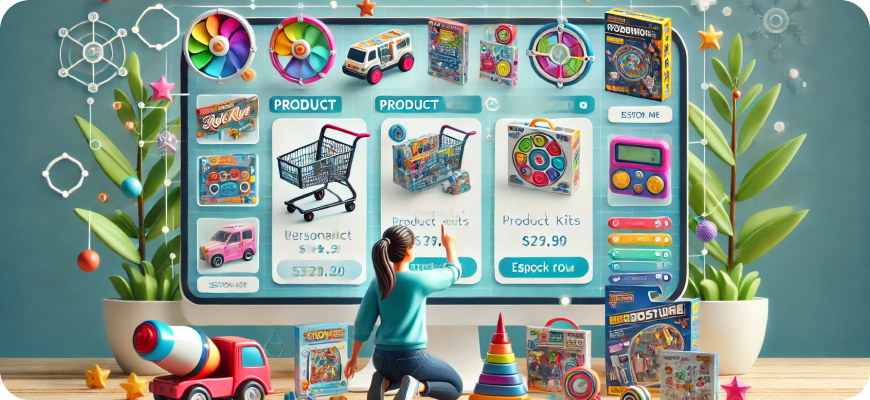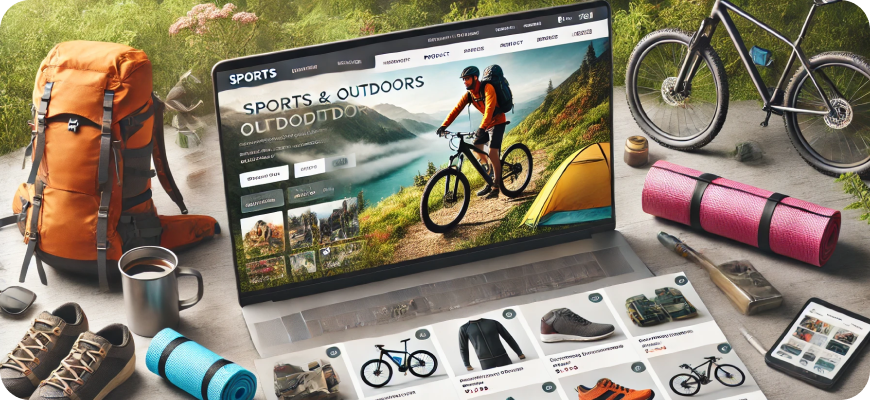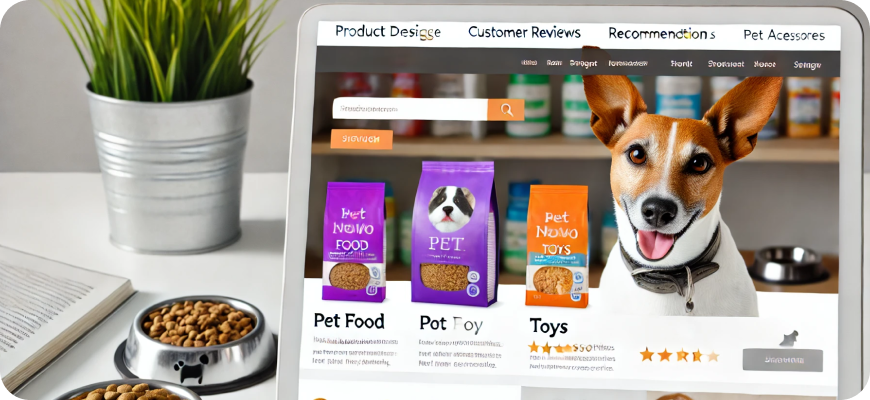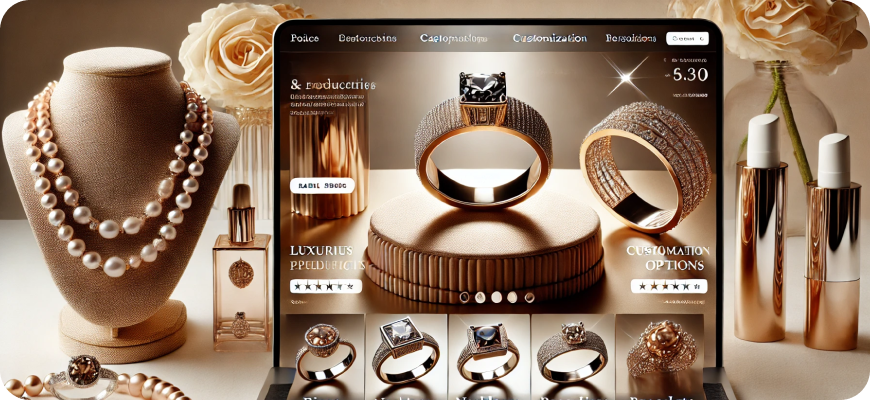How to benefit social media and UGC in your ecommerce
In today’s digital landscape, social media and user-generated content (UGC) have become invaluable tools for e-commerce businesses. Social media enables brands to engage directly with their audience, create a community, and reach potential customers at a global scale. Meanwhile, UGC—content created by customers, fans, and influencers—serves as a powerful form of social proof, driving trust and authenticity. Integrating social media and UGC into your e-commerce strategy can help boost brand visibility, improve conversion rates, and foster customer loyalty. This article will explore how e-commerce brands can benefit from social media and UGC and provide actionable strategies to leverage both effectively.

1. Build Brand Awareness Through Social Media
One of the primary benefits of social media is its ability to increase brand awareness. With millions of users active daily on platforms like Instagram, Facebook, TikTok, and Twitter, e-commerce brands have endless opportunities to connect with new audiences.
Tips for Building Brand Awareness:
- Choose the Right Platforms: Identify the social media platforms that align best with your target audience. For instance, Instagram and TikTok work well for visually-oriented brands, while LinkedIn is better suited for B2B and professional-oriented e-commerce.
- Create Consistent, High-Quality Content: Consistency is crucial for maintaining visibility. Use a mix of posts, Stories, Reels, and live videos to keep followers engaged.
- Engage With Your Audience: Respond to comments, like customer posts, and interact with followers to build a loyal and engaged community.
Example:
Glossier, a skincare and beauty brand, uses Instagram to showcase products in a visually appealing way while engaging with its followers. By maintaining a strong visual identity and consistently sharing high-quality posts, Glossier has built a community that feels connected to the brand.
2. Leverage User-Generated Content as Social Proof
User-generated content serves as an authentic endorsement from real customers, enhancing trust and influencing purchasing decisions. UGC includes photos, videos, reviews, and testimonials shared by customers who have used and enjoyed your products.
Benefits of UGC:
- Builds Trust and Credibility: People trust content created by other customers more than traditional brand advertising.
- Increases Engagement: UGC encourages other customers to join the conversation, share their experiences, and become part of the community.
- Boosts Conversions: Seeing real people using and enjoying your products increases the likelihood of purchase.
How to Encourage UGC:
- Create a Unique Hashtag: Encourage customers to share their photos with a branded hashtag. For example, GoPro uses #GoPro to allow customers to tag their photos and videos, which the brand can then share.
- Feature UGC on Your Website: Display customer photos, reviews, and testimonials on product pages to show real-life examples of your products in use.
- Host Contests and Giveaways: Incentivize customers to create and share content by offering prizes or discounts for the best UGC submissions.
Example:
Warby Parker, an eyewear brand, encourages customers to share photos wearing their glasses. These photos are then displayed on the brand’s social media channels, adding credibility and showcasing satisfied customers.
3. Use Influencer Partnerships to Reach New Audiences
Influencers play a major role in promoting products on social media, and they can help e-commerce brands reach a broader and more engaged audience. Collaborating with influencers can introduce your brand to their followers, who are more likely to trust recommendations from a familiar source.
Tips for Effective Influencer Marketing:
- Select Relevant Influencers: Partner with influencers who align with your brand values and appeal to your target demographic.
- Consider Micro-Influencers: Smaller influencers often have highly engaged followers and can be more cost-effective than larger influencers.
- Provide Creative Freedom: Allow influencers to present your product in their unique style. Authentic endorsements resonate better with their audience.
Example:
Daniel Wellington watches became a well-known brand through influencer marketing on Instagram. By partnering with influencers who shared their unique styles, the brand successfully expanded its reach and built a strong social media presence.
4. Showcase UGC in Paid Social Media Campaigns
Using UGC in paid advertising campaigns can increase their effectiveness. Advertisements that feature real customers and authentic experiences can perform better than traditional ads, as they feel more relatable and genuine.
Benefits of UGC in Paid Campaigns:
- Improves Ad Credibility: UGC feels less like an ad and more like a friend’s recommendation, which can improve click-through rates.
- Increases Engagement: Ads with UGC tend to receive more engagement since they resonate with audiences on a personal level.
- Boosts Conversion Rates: UGC helps potential customers envision themselves using the product, which can increase purchase intent.
How to Incorporate UGC in Paid Campaigns:
- Use Customer Photos and Videos: Create ads that showcase customers enjoying your products in real life.
- Incorporate Customer Testimonials: Include quotes or testimonials from happy customers to add credibility.
- Highlight Popular Hashtags: Use popular hashtags associated with your brand to make the ad feel more organic.
Example:
Lululemon often uses UGC in its paid social ads, showcasing real customers and influencers wearing their activewear. These ads feel authentic and encourage others to join the community by sharing their own experiences.
5. Enable Shoppable Social Media Posts
Social media platforms like Instagram and Facebook now offer shoppable posts, which allow customers to purchase products directly from the app. Shoppable posts make it easy for customers to buy without having to leave the platform, streamlining the buying process and reducing friction.
Benefits of Shoppable Posts:
- Simplifies the Buying Process: Customers can click on the product in a post and complete the purchase without being redirected to a different site.
- Boosts Impulse Purchases: The convenience of shoppable posts encourages quick, impulse buys.
- Increases Product Discoverability: Shoppable posts reach a broad audience and expose more people to your products.
Example:
Nike frequently uses shoppable posts on Instagram, tagging products in lifestyle images and allowing followers to click through to purchase directly. This seamless experience enhances convenience and encourages spontaneous purchases.
6. Engage Customers with Interactive Content
Interactive content, such as polls, quizzes, and Q&A sessions, can boost engagement and encourage customers to participate in your brand’s community. This type of content builds a sense of connection and offers valuable insights into customer preferences.
Interactive Content Ideas:
- Polls and Surveys: Ask customers about their preferences or upcoming products to gain insights and make them feel involved.
- Quizzes: Create product recommendation quizzes that help customers find the right product based on their preferences.
- Live Q&A Sessions: Host live Q&A sessions where customers can ask questions about products, new launches, or get behind-the-scenes information.
Example:
Sephora uses quizzes on Instagram Stories and their website to help customers find the best beauty products for their needs. These interactive experiences drive engagement and provide personalized recommendations.
7. Boost Conversions with Social Proof
Social proof is a psychological phenomenon where people mimic the actions of others. When potential customers see others enjoying and recommending your products, they’re more likely to make a purchase themselves.
How to Use Social Proof:
- Showcase Customer Reviews and Ratings: Display reviews and star ratings prominently on your product pages and social media channels.
- Highlight Popular Products: Label certain items as “Bestsellers” or “Customer Favorites” to increase desirability.
- Share UGC on Social Media Feeds: Repost customer photos and testimonials regularly to show real-life use cases and foster trust.
Example:
Amazon prominently features customer reviews and “Best Seller” labels on popular products, leveraging social proof to increase conversions and encourage purchases.
8. Encourage Customers to Share Their Experience
Encouraging customers to share their experiences with your brand can lead to a steady stream of UGC. By incentivizing customers to share content, you can amplify your brand’s reach and keep customers engaged long after their purchase.
Strategies to Encourage Sharing:
- Create a Branded Hashtag: Encourage customers to use a unique hashtag when posting about your products.
- Offer Discounts for UGC: Give customers a small discount on their next purchase if they share a photo and tag your brand.
- Feature Customer Content: Regularly highlight customer content on your social media feeds or website to show appreciation and motivate others to share.
Example:
Starbucks uses #Starbucks as a branded hashtag for customers to share their coffee creations and experiences. By reposting customer photos, Starbucks celebrates its community and incentivizes others to share.
9. Use UGC to Enhance Your Product Pages
UGC can enhance product pages by providing real-life examples of how products look and perform. This content helps customers make informed decisions, reduces uncertainty, and increases conversions.
Tips for Adding UGC to Product Pages:
- Include Customer Photos: Display customer photos alongside professional images to show the product in different settings.
- Showcase Video Reviews: Videos created by real customers can offer valuable insights into the product’s quality, features, and usability.
- Highlight Reviews for Specific Attributes: Use filters to showcase reviews that mention specific benefits or features, such as fit, size, or durability.
Example:
ASOS includes customer photos and reviews on its product pages, allowing shoppers to see how clothes look on real people and in various settings.
10. Track and Measure Social Media and UGC Performance
To make the most of social media and UGC, it’s essential to track and analyze performance. Monitoring metrics allows you to understand what resonates with your audience, which campaigns are successful, and where improvements can be made.
Key Metrics to Track:
- Engagement Rates: Likes, comments, shares, and saves on social media posts to gauge audience interest.
- Click-Through Rates (CTR): Track how many people click on links in UGC or social media posts to measure effectiveness.
- Conversion Rates: Measure how many people make a purchase after interacting with social media content or UGC.
- Reach and Impressions: Track how many people see your content and how often, to understand the breadth of your brand’s impact.
Example:
Brands like H&M use Instagram Insights and Google Analytics to monitor engagement and performance, allowing them to fine-tune their content and maximize the impact of UGC on their social media channels.
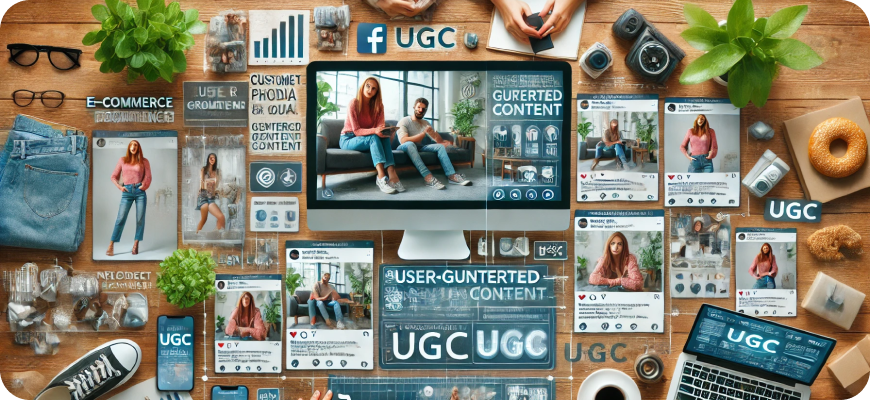
Conclusion
Integrating social media and user-generated content into your e-commerce strategy can strengthen your brand, increase customer trust, and boost sales. From building brand awareness through consistent engagement to encouraging UGC that serves as social proof, these strategies provide numerous opportunities to enhance the customer experience. By continuously engaging with your audience, leveraging authentic content from real customers, and tracking performance, you can create a powerful e-commerce strategy that drives growth and loyalty.

